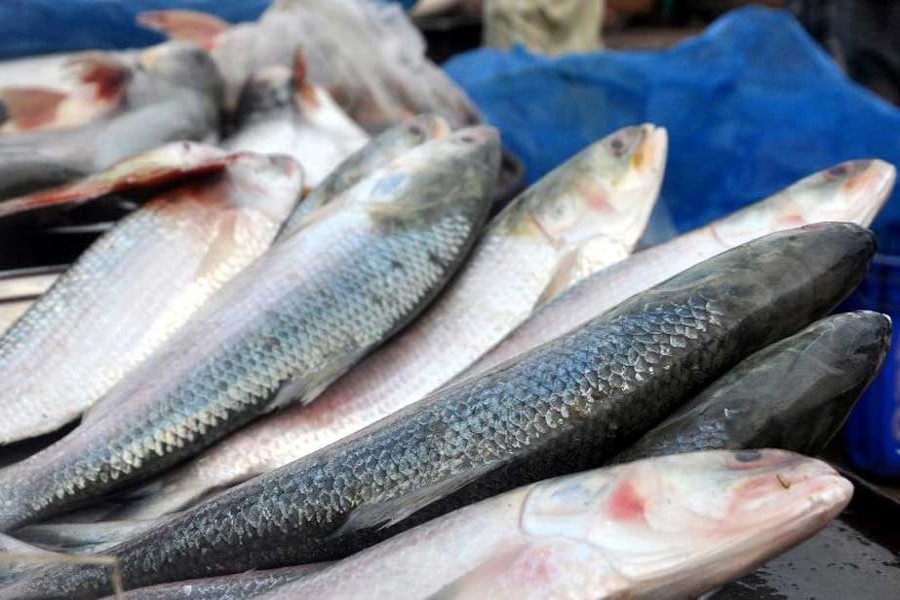Hilsa was selling at much higher prices at city kitchen markets on Friday, just one day ahead of Pahela Baishakh, following a high demand for the fish.
Although vigorous campaigns were carried out over the last few years against keeping hilsa on the Pahela Baishakh menu, people were seen buying it at extremely high prices to celebrate the occasion.
As an eight-month ban on catching, transportation and selling of jatka (hilsa fishling) is in place, fishermen are catching hilsa on a limited scale, forcing traders to go for frozen and imported hilsas, reports UNB.
Buyers claimed that the prices of the fish are very high at the markets.
Visiting different city kitchen markets on Friday, it was seen that hilsa weighing 1.800 kg was sold at Tk 5,500 per kg while per four pieces weighing 1-1.200 kg each at Tk 8,000-10,000, 800-900 gram per four pieces Tk 6,000-7,000, 600-700 gram per piece Tk 600-700 and 400-500 gram per piece Tk 450-550. Most of them are frozen.
It was also seen that customers were buying hilsas imported from Myanmar.
Per 10-kg box containing 22 hilsas was selling at Tk 3,400 while that containing 19 and 16 hilsas at Tk 4,800 and Tk 5,800 respectively.
Mobile hilsa sellers are selling these types of hilsas in the name of hilsa from Chandpur, alleged many.
Mohammad Selim, a wholesaler of Karwan Bazar, said hilsa is not available at this time. "Fishermen are not catching hilsas as the jatka conservation programme is in progress.
To avoid arrest and fine, fishermen are not going to rivers for catching hilsa. So, most of the hilsas available in markets are frozen and imported ones," he said.
According to a government estimate, a total of 4.13 million tonnes of fish were produced in 2016-2017 fiscal year and hilsa accounted for 12 per cent of it. The contribution of hilsa to the country’s GDP is 1.0 per cent.
In the last eight years, the hilsa production was increased by 66 per cent.
According to information available at the Fisheries Inspection and Quality Control station in Chattogram, a total of 479.945 tonnes of hilsa have been imported in nine months of the current fiscal year against 8115.617 tonnes hilsa in the last fiscal year of 2016-17.


